A Stablecoin Comparison: Circle vs Tether
The digital currency landscape has been fundamentally transformed by the emergence of stablecoins, with two companies dominating this critical infrastructure: Circle and Tether. These organizations have built the backbone of cryptocurrency trading and cross-border payments through their flagship tokens, USDC and USDT respectively. This comprehensive analysis examines their business models, regulatory approaches, financial performance, and market impact.
Executive Summary
Circle and Tether represent two fundamentally different approaches to stablecoin issuance and business strategy. Circle has positioned itself as the compliance-first, transparency-focused alternative, while Tether has maintained market dominance through early adoption and aggressive reserve management. Although USDC’s market capitalization is about a third of USDT’s, the profit difference between the two companies is enormous. In 2024, Tether recorded $13 billion in gross profit, while Circle’s net income was $156 million.
Company Backgrounds and History
Circle: The Regulatory Pioneer
Circle Internet Group was founded in October 2013 by Jeremy Allaire and Sean Neville, initially focusing on Bitcoin payments before evolving into a major stablecoin issuer. The company is headquartered in Boston, Massachusetts, and has established itself as “the most licensed stablecoin company in the world” through proactive regulatory compliance. Circle became the first company to receive a BitLicense from the New York State Department of Financial Services in 2015, demonstrating its commitment to regulatory alignment from an early stage.
The company’s journey toward becoming a public entity culminated in June 2025 when it completed an IPO, raising $1.1 billion and achieving a valuation of $6.9 billion. This milestone marked Circle as one of the few pure-play crypto companies to successfully list on U.S. exchanges alongside Coinbase, Mara Holdings, and Riot Platforms.
Tether: The Market Dominator
Tether was founded in 2014 by a group of Bitcoin enthusiasts passionate about facilitating the use of fiat currencies in digital form. Based in Hong Kong and owned by iFinex (which also operates the Bitfinex cryptocurrency exchange), Tether launched the first major stablecoin with USDT. The company has evolved beyond its original scope, responding to global needs with agility and becoming a lifeline for millions during economic instability.
Tether’s story is one of remarkable growth despite facing significant regulatory scrutiny throughout its history. The company has maintained its position as the largest stablecoin issuer while expanding into various sectors including Bitcoin mining, peer-to-peer communications, and artificial intelligence infrastructure.
Stablecoin Products and Market Position
USDC: The Transparent Alternative
USD Coin (USDC) was launched in 2018 through a partnership between Circle and Coinbase via the Centre Consortium. USDC has grown to become the second-largest stablecoin with a market capitalization of approximately $60.94 billion as of June 2025. The stablecoin recorded an impressive 78% year-over-year growth in circulation during 2024, surpassing the growth of all other major stablecoins.
USDC operates across multiple blockchain networks and has achieved significant adoption in decentralized finance (DeFi) applications. Monthly transaction volume reached $1 trillion in November 2024, with all-time volume surpassing $18 trillion. The USDC user base has expanded to be accessible through more than 500 million end-user wallet products globally.
USDT: The Volume Leader
Tether’s USDT remains the undisputed leader in the stablecoin market, accounting for 69% of global stablecoin supply with a market capitalization of approximately $152.7 billion as of 2025. USDT has achieved remarkable adoption metrics, with over 109 million on-chain wallets holding the token as of Q4 2024. Recent estimates suggest USDT has approximately 434 million global users, highlighting its dominant role in the cryptocurrency ecosystem.
USDT’s trading volume regularly exceeds $55 billion in 24-hour periods, often surpassing the combined trading volumes of major cryptocurrencies including Bitcoin, Ethereum, USDC, Solana, and other tokens. The stablecoin is available across 14 different blockchain networks, including Ethereum, Tron, Solana, and others.
Business Models and Revenue Structures
Circle's Conservative Approach
Circle’s business model centers on earning interest from the reserves backing USDC, which are predominantly held in short-term U.S. Treasury securities. In 2024, Circle reported revenue exceeding $1.676 billion, with 95-99% coming from interest income and only 0.9% from service revenue. However, Circle’s profitability is significantly impacted by substantial distribution costs, including $907.9 million paid to Coinbase for distribution fees in 2024.
The company’s revenue model also includes transaction fees from Circle Trade, interest on assets under management in Circle Invest, and premium features for businesses such as API access. Circle’s approach emphasizes regulatory compliance and transparency, which has positioned it favorably with institutional investors but has limited its profit margins compared to competitors.
Tether's Aggressive Strategy
Tether’s business model is characterized by a more aggressive approach to reserve management and revenue generation. The company reported an extraordinary $13 billion in gross profit for 2024, with 54% derived from U.S. Treasury interest and nearly $5 billion from unrealized gains in Bitcoin and gold holdings. Tether’s Bitcoin holdings exceed 100,000 tokens, indicating a high-volatility profit structure that contrasts sharply with Circle’s conservative approach.
Unlike Circle, Tether makes minimal distribution payments to partners, allowing it to retain more revenue. The company claims to rank among the most profitable companies per employee globally, with less than 200 employees generating more than $65 million in gross profit per person in 2024. Tether’s revenue streams include transaction fees, interest income from reserves, and gains from alternative investments including precious metals and secured loans.
Reserve Management and Transparency
Circle's Compliance-First Approach
Circle maintains a fully reserved system where USDC is backed 100% by highly liquid cash and cash-equivalent assets. The company publishes monthly reserve attestations conducted by Big Four accounting firms, providing transparency about the composition and value of its reserves. As of June 2025, Circle held $61.24 billion in reserves backing $60.94 billion USDC in circulation.
Circle’s reserves consist primarily of cash held in regulated financial institutions and short-term U.S. Treasury instruments. The company maintains approximately $5.8 billion in cash, significantly more than Tether’s $64 million, suggesting greater liquidity for redemptions. This conservative approach has been praised for its transparency but criticized for limiting profit potential.
Tether's Diversified Strategy
Tether’s reserve management has been a source of ongoing controversy and regulatory scrutiny. As of June 2024, Tether reported $118.4 billion in reserves, exceeding the $113 billion USDT in circulation by approximately $5.3 billion. The company’s reserves are more diversified than Circle’s, including U.S. Treasury bills, corporate bonds, secured loans, precious metals, Bitcoin, and other investments.
Tether has faced criticism for its historical lack of transparency regarding reserve composition. In 2021, the U.S. Commodity Futures Trading Commission fined Tether $41 million for misrepresenting that USDT was fully backed by U.S. dollars when it was only backed 27.6% of the time. While Tether has improved its disclosure practices, critics argue that the company has never provided a full audit by a major accounting firm.
Regulatory Compliance and Legal Challenges
Circle's Proactive Compliance
Circle has built its business strategy around proactive regulatory compliance, becoming the first major stablecoin issuer to fully comply with the European Union’s Markets in Crypto-Assets (MiCA) regulation in 2024. The company holds comprehensive licenses, including money transmitter licenses across 48 U.S. states and an Electronic Money Institution license in France.
Circle’s regulatory approach includes collaboration with financial authorities and investment in compliance infrastructure. The company launched its Compliance Engine in 2024, offering real-time transaction screening and monitoring to help businesses meet regulatory requirements. However, this compliance-first approach has also created challenges, including difficulties maintaining stable banking partnerships and managing the costs associated with regulatory requirements.
Tether's Reactive Approach
Tether’s relationship with regulators has been characterized as reactive rather than proactive. The company has faced numerous legal challenges, including investigations by the New York Attorney General’s office and fines from the U.S. Commodity Futures Trading Commission. Recent reports suggest that U.S. federal prosecutors are investigating Tether for potential anti-money laundering violations and sanctions compliance issues.
Despite these challenges, Tether has taken steps to improve its regulatory standing, including collaboration with over 180 law enforcement agencies across 45 jurisdictions and the freezing of over 1,850 wallets tied to illegal activities. The company emphasizes its commitment to combating illicit activities while maintaining that there is no indication it is under investigation.
Market Adoption and Use Cases
Circle's Institutional Focus
Circle has strategically positioned USDC for institutional adoption and compliance-conscious applications. The stablecoin has gained traction among traditional financial institutions, with partnerships including BlackRock and BNY Mellon demonstrating growing institutional conviction. USDC is widely used in DeFi applications, serving as a foundation for lending protocols like Aave and Compound.
Recent partnerships highlight Circle’s expansion strategy, including collaborations with Shopify for merchant payments, Ripple for XRP Ledger integration, and Grab for Web3 customer experiences in Singapore. These partnerships demonstrate USDC’s growing utility in real-world payment applications and cross-border transactions.
Tether's Global Dominance
USDT’s adoption has been driven by its utility in trading, remittances, and as a store of value in volatile markets. The stablecoin has become particularly important in emerging markets where traditional financial systems may be less reliable or accessible. USDT’s early market entry and widespread exchange support have cemented its position as the primary trading pair for cryptocurrency transactions.
Tether’s global reach is evidenced by its availability across 14 blockchain networks and its use in over 160 countries. The stablecoin has become essential infrastructure for the cryptocurrency ecosystem, often serving as the primary liquidity bridge between different digital assets.
Market Adoption and Use Cases
The financial performance gap between Circle and Tether is remarkable given their relatively similar market positions. While USDT’s market capitalization is only 213% larger than USDC’s, Tether’s profit was approximately 8,000% larger in 2024. This disparity stems from several factors:
Revenue Generation: Tether’s diversified reserve strategy and minimal distribution costs allow for higher profit margins. Circle’s substantial payments to Coinbase ($907.9 million in 2024) significantly impact its bottom line.
Reserve Management: Tether’s willingness to include volatile assets like Bitcoin and gold in its reserves has generated substantial unrealized gains, while Circle’s conservative approach limits profit potential.
Operating Efficiency: Tether’s lean operation with fewer than 200 employees contrasts with Circle’s larger workforce and compliance infrastructure.
Technology and Infrastructure
Both companies have invested heavily in blockchain infrastructure and developer tools. Circle offers comprehensive APIs and developer services for integrating stablecoins into applications. The company’s Cross-Chain Transfer Protocol (CCTP) enables seamless movement of USDC across different blockchain networks.
Tether has focused on multi-chain deployment, making USDT available across the broadest range of blockchain networks. This strategy has enhanced interoperability and accessibility, contributing to USDT’s dominant market position.
Future Outlook and Strategic Positioning
Circle's Growth Trajectory
Circle’s successful IPO and regulatory compliance position it well for continued institutional adoption. The company’s transparent approach and regulatory alignment make it attractive to risk-averse businesses and financial institutions. Analysts project potential revenue growth to $6.5-8 billion annually within five years as USDC circulation expands and enterprise services mature.
Tether's Expansion Strategy
Tether continues to diversify its business beyond stablecoins, investing in Bitcoin mining, AI infrastructure, and communication technologies. The company’s strong financial position and global user base provide a foundation for continued growth, though regulatory challenges may impact future operations.
Conclusion
Circle and Tether represent two distinct approaches to building stablecoin infrastructure. Circle’s compliance-first strategy has created a more transparent and institutionally acceptable product, while Tether’s aggressive growth and reserve management have generated extraordinary profits and market dominance. As the stablecoin market continues to evolve, both companies face unique opportunities and challenges that will shape the future of digital currency infrastructure.
The choice between these approaches reflects broader questions about the balance between innovation, regulation, and financial stability in the cryptocurrency ecosystem. While Circle offers greater transparency and regulatory certainty, Tether provides unmatched liquidity and global reach. Both models will likely continue to coexist, serving different segments of the growing digital asset market.





